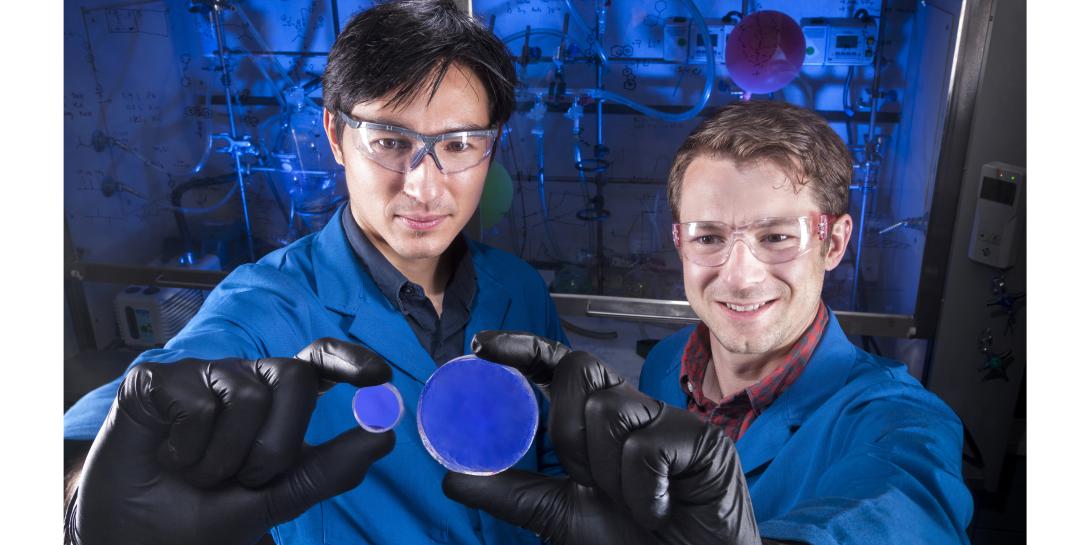Sandia Labs Go Organic For Scintillators
Sandia National Laboratory researchers have discovered a simpler way to detect nuclear material. Their research resulted in use of organic glass scintillators.
Sandia National Laboratory researchers have discovered a cost-effective and simpler way to detect nuclear material. Their research makes use of organic glass scintillators that, when employed, could make it harder to smuggle nuclear materials though U.S. ports and borders.
The team of researchers created a scintillator—a device used to detect nuclear threats—out of an organic glass material instead of relying on the standard material called trans-stilbene, crystalline in the form of a molecule, according to a Sandra Lab press release.
The team set out to “strengthen national security by improving the cost-to-performance ratio of radiation detectors at the front lines of all material moving into the country,” says Patrick Feng, a material scientist and principal investigator at Sandia. He started developing alternative classes of organic scintillators in 2010.
To improve that ratio, the team needed to bridge the gap between the best and most sensitive scintillator material with a more cost-effective solution. Scientists noted how the scintillators indicate the difference between potentially dangerous nuclear materials and those deemed normal and non-threatening sources of radiation, such as naturally occurring radiation or radiation used in medical treatments.
The Sandia team first reported on the benefits of organic glass as a scintillator material in June 2016, but made recent discoveries surrounding scintillators that mimic light-emitting diodes, or LEDs, says Sandia organic chemist Joey Carlson. LEDs apply a known amount of electrical energy to a device to produce a desired amount of light. By contrast, scintillators produce light in response to the presence of an unknown radiation source material, the release explains. Depending on the amount of light produced and the speed with which the light appears, the source can be identified.
Organic glass melts better than trans-stilbene and does not become cloudy or crystallized when it cools. The team achieved the most desirable qualities—stability, transparency and brightness—by incorporating fluorine into the scintillator compounds.
For 40 years, trans-stilbene has been the gold standard scintillator material, despite intense research to develop a replacement, according to the Sandia news release. Trans-stilbene is highly effective at differentiating between two types of radiation: gamma rays, which are ubiquitous in the environment, and neutrons, which emanate almost exclusively from controlled threat materials such as plutonium or uranium.
The organic glass would replace two forms of detection methods. Though experts consider trans-stilbene the best material, it requires a lot of energy and several months to produce. The crystals are expensive, costing roughly $1,000 per cubic inch. Additionally, because they are fragile, they rarely are used in the field.
To mitigate the cost shortcoming, plastics became the material more commonly used for scintillators at borders and ports of entry. The cost is markedly less, coming in at $1 per cubic inch. And they can be molded into large shapes, which is essential for scintillator sensitivity. “The bigger your detector, the more sensitive it’s going to be, because there’s a higher chance that radiation will hit it,” Feng says.
However, despite the difference in price, plastics cannot efficiently differentiate between types of radiation—a task that requires a separate helium tube. The type of helium used in these tubes is rare, non-renewable and significantly adds to the cost and complexity of a plastic scintillator system, the release notes. Plastics also lack brightness, which means they do not do well detecting weak sources of radiation.
For these reasons, the Sandia team began experimenting with organic glasses, which can discriminate between types of radiation. In fact, Feng’s team found the glass scintillators to be greater than the trans-stilbene in radiation detection tests.
With this discovery still comes a challenge. Scientists found that if the glass compounds get too hot for too long, they crystallize, affecting their performance. Feng’s team found that blending compounds containing fluorene to the organic glass molecules made them stable.
The next step toward commercialization is casting a large prototype organic glass scintillator for field testing. Feng and his team want to show that organic glass scintillators can withstand the humidity and other environmental conditions found at ports.
The National Nuclear Security Administration has funded the project for an additional two years, giving the team time to research use of organic glass scintillators to meet additional national security needs.





Comments